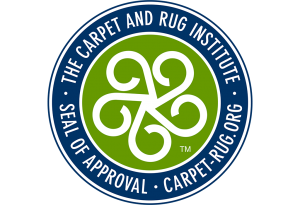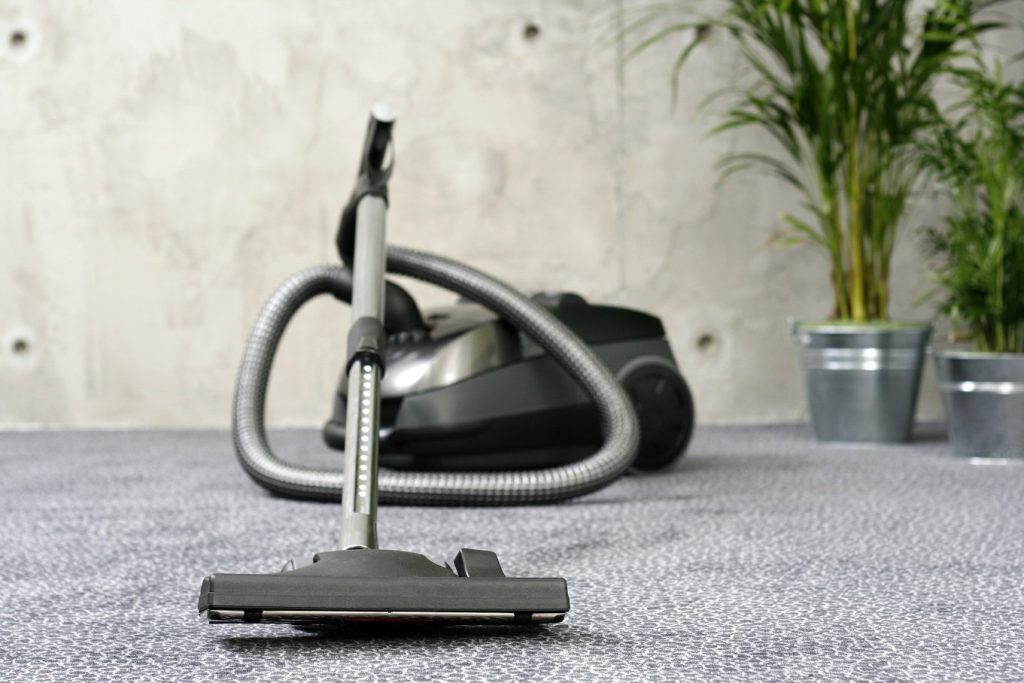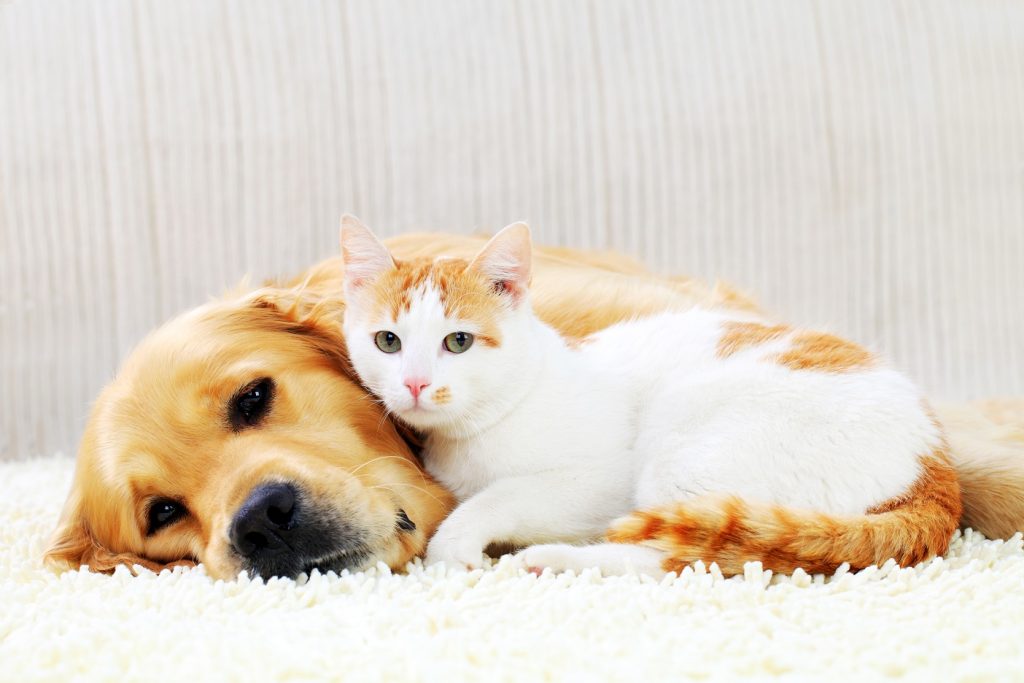What You Need to Know
The beauty and life of your carpet depends on the care it receives. Proper cleaning will keep your carpet looking great for its full lifetime, help improve your indoor air quality, and keep your carpet warranties intact. Cleaning your carpet properly is easier than you think. All it takes is a little knowledge about how to select the right carpet cleaning products and most appropriate method for cleaning your carpet. The CRI Seal of Approval program helps you identify effective carpet cleaning solutions, equipment, and service providers that clean carpet right the first time, without the fear of faster resoiling, stains reappearing, or damage to your carpet.
Get a free copy of the CRI 204 Commercial Carpet Maintenance and Cleaning Standards.
What if you don’t have a CRI-approved carpet cleaning solution handy? Use the CRI Spot Solver to search for cleaning tips and procedures for hundreds of spots and stains.
Cleaning Essentials
Four Steps for Proper Carpet Care
- Vacuum regularly and more frequently in high traffic areas, and everywhere according to a vacuuming schedule, using a Seal of Approval-certified vacuum.
- Clean spots and spills quickly with products that do not damage the carpet or cause it to resoil quicker. SOA-certified solutions to clean effectively and maintain the life of carpet.
- Professionally deep clean your carpets every 12 to 18 months to remove embedded dirt and grime. SOA-certified cleaners are recommended and sometimes required by the manufacturer.
- Stop dirt at the door by using mats outside and in, taking your shoes off when you enter the house and changing your air filters to reduce airborne dust particles.

The Seal of Approval Program
CRI wants vacuums, extractors, cleaning systems, cleaning products, and service providers to be as effective as possible. The Seal of Approval program is the only one in the industry that scientifically measures cleaning efficacy. The results help consumers make informed decisions and manufacturers improve their products. So carpets are cleaner, healthier, and last longer.
Find out more about the Seal of Approval Program.
Basic Rug Care
Rugs deserve the same care as wall-to-wall carpet and, in some cases, require special attention.
- Washing rugs — If your rug is small and the label says “machine washable,” shake the rug outside first and then put it in the washing machine at the recommended temperature. Use warm water (90 to 105 degrees) and a mild detergent. Tumble your rug dry at the lowest heat setting.
- Beating larger rugs — If your larger rug is easy to pick up, shake it outside first; then put it over a clothesline and beat it. Next, take the rug inside and vacuum it. Many carpet cleaning professionals have rug cleaning expertise as well, but, if the label says dry clean only, your best bet may be to roll it up and take it to a dry cleaner. Save time and aggravation by calling first to see if the cleaner does rug cleaning — many do not.
- Vacuuming area rugs — Area rugs with fringe require special technique. Use gentle suction and start from the center of the carpet, vacuuming toward the fringe and being careful not to catch the strands in the beater bar. Lift the carpet edge to vacuum beneath the fringe.
- Caring for Oriental, Turkish or Persian rugs — Clean imported rugs according to your carpet manufacturer’s specifications or bring in a professional cleaning service. Be gentle with fringe. For heirloom-type rugs, you need professionals.
Vacuuming
Vacuuming 101
- A quick once-over doesn’t do much. Slow and steady does the trick.
- When vacuuming, don’t ignore those corners and crevices where dust builds.
- Remember to replace or empty vacuum bags when they are half to two-thirds full as this improves the efficacy of the vacuum.
How Often Should You Vacuum?
- Vacuum daily in high-traffic areas.
- Vacuum twice weekly in medium-traffic areas.
- Vacuum weekly in light-traffic areas, using attachments at carpet edges.

Vacuuming
Vacuuming 101
- A quick once-over doesn’t do much. Slow and steady does the trick.
- When vacuuming, don’t ignore those corners and crevices where dust builds.
- Remember to replace or empty vacuum bags when they are half to two-thirds full as this improves the efficacy of the vacuum.
How Often Should You Vacuum?
- Vacuum daily in high-traffic areas.
- Vacuum twice weekly in medium-traffic areas.
- Vacuum weekly in light-traffic areas, using attachments at carpet edges.

Cleaning Spots and Spills
A Two-Step Solution
With today’s stain-resistant carpet, treating spots and stains has never been easier. Still, no carpet is completely stain proof. The key is to act quickly! So, to knock out spots, give them a one-two punch.
Step One: Absorb the Spill
- Blot liquids with a dry, white absorbent cloth or plain white paper towels (no prints or colors). Using a printed or colored material may transfer ink or dye to your damp carpet. Continue until the area is barely damp. Semisolids, like food spills, may need to be scooped up with a spoon. Solid, dried bits can be vacuumed up.
- Warning: do not scrub or use a brush. Bristles and scrubbing can damage carpet. Fraying and texture change are the likely results.
Step Two: Treat the Spot or Stain
- Use a CRI Certified Seal of Approval carpet cleaning product. Though these have been laboratory tested, you should still pretest any cleaner on a scrap of carpet or in an out-of-the-way area of your carpet.
- Follow the product’s directions carefully. More is not better. Apply a small amount of the cleaner to a white cloth and work in gently, from the edges to the center. Blot; don’t scrub. You may need to do this several times to remove the spot. After the spot is gone, blot the area with clear water once or more to remove any remaining product.
What if you don’t have a CRI-approved carpet cleaning solution handy? Try one of the remedies from the CRI Spot Solver.
Special Tips for Facilities with Pets
Does your facility allow pets? You can combat pet odors and stains in many ways:
- Vacuum carpet more frequently to capture pet hair and dander from your pet’s fur.
- Use CRI Certified Seal of Approval cleaning products that are specifically designed for pet stains and odors.
- Clean up new messes promptly and then follow the steps for spot and stain removal.
- Use small hand extractors for quick cleanups of pet accidents, but remember that these quick clean ups don’t take the place of periodic deep cleaning.
- Have your carpet professionally cleaned every 12 to 18 months More frequently if necessary.
- Don’t use a steam cleaner when dealing with urine spots because the heat will set the stain and the smell. Extracting the spill with a wet-vacuum and rinsing with cool water will reduce the odor. If necessary, call in certified carpet cleaning firms that know how to remove pet stains and odors permanently.



